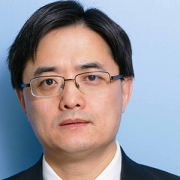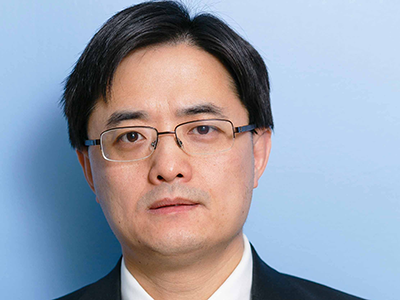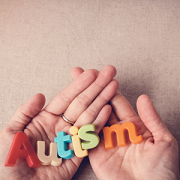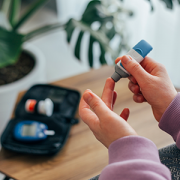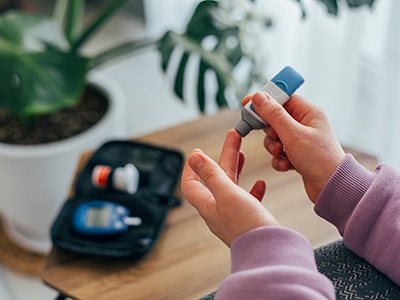Pediatric Device Innovators Forum explores state of focused ultrasound
For children living with pediatric tumors, less invasive and less painful treatment with no radiation exposure was not always possible. In recent years, the development of technologies like Magnetic resonance guided high intensity focused ultrasound (MR-HIFU) and Low intensity transcranial focused ultrasound (LIFU) is helping to reverse that trend.
This topic was the focus of the recent Pediatric Device Innovators Forum (PDIF) hosted by the National Capital Consortium for Pediatric Device Innovation (NCC-PDI) in partnership with the U.S. Food and Drug Administration’s (FDA) Pediatric Device Consortia (PDC) grant program. A collaboration between Children’s National Hospital and University of Maryland Fischell Institute for Biomedical Devices, NCC-PDI is one of five PDCs funded by the FDA to support pediatric device innovators in bringing more medical devices to market for children.
The discussion, moderated by Kolaleh Eskandanian, Ph.D., MBA, PMP, vice president and chief innovation officer at Children’s National and principal investigator of NCC-PDI, explored the use of focused ultrasound’s noninvasive therapeutic technology for two pediatric indications, Osteoid Osteoma (OO) and Diffuse Intrinsic Pontine Glioma (DIPG), and the ways it can increase the quality of life for pediatric patients while also decreasing the cost of care.
The discussion also examined the most common barriers preventing more widespread implementation of focused ultrasound technology, specifically small sample size for evidence generation, lack of funding opportunities and reimbursement issues that can make or break a technology’s chances at reaching the patients that need it.
Karun Sharma, M.D., director of Interventional Radiology at Children’s National, emphasized the potential for focused ultrasound to treat localized pain relief and treat other diseases that, like OO, do not have any other therapeutic alternative
“At Children’s National, we use MR-HIFU to focus an ultrasound beam into lesions, usually tumors of the bone and soft tissues, to heat and destroy the harmful tissue in that region, eliminating the need for incisions,” says Sharma. “In 2015, Children’s National doctors became the first in the U.S. to use MR-HIFU to treat pediatric osteoid osteoma (OO), a painful, but benign, bone tumor that commonly occurs in children and young adults. The trial demonstrated early success in establishing the safety and feasibility of noninvasive MR-HIFU in children as an alternative to current, more invasive approaches to treat these tumors.”
In November 2020, the FDA approved this MR-HIFU system to treat OO in pediatric patients.
Roger Packer, M.D., senior vice president of the Center for Neuroscience and Behavioral Medicine at Children’s National, also discussed how focused ultrasound, specifically LIFU, has also proven to be an attractive modality for its ability to non-invasively, focally and temporarily disrupt the blood brain barrier (BBB) to allow therapies to reach tumors that, until recently, would have been considered unreachable without severe intervention.
“This presents an opportunity in pediatric care to treat conditions like Diffuse Intrinsic Pontine Glioma (DIPG), a highly aggressive brain tumor that typically causes death and morbidity,” says Packer.
Packer is planning a clinical trial protocol to investigate the safety and efficacy of LIFU for this pediatric indication.
The forum also featured insight from Jessica Foley, M.D., chief scientific officer, Focused Ultrasound Foundation; Arjun Desai, M.D., chief strategic innovation officer, Insighttec; Arun Menawat, M.D., chairman and CEO, Profound Medical; Francesca Joseph, M.D., Children’s National; Johannes N. van den Anker, M.D., Ph.D., vice chair of Experimental Therapeutics, Children’s National; Gordon Schatz, president, Schatz Reimbursement Strategies; Mary Daymont, vice president of Revenue Cycle and Care Management, Children’s National; and Michael Anderson, MD, MBA, FAAP, FCCM, FAARC, senior advisor to US Department of Health and Human Services (HHS/ASPR) and Children’s National.
Anthony Sandler, M.D., senior vice president and surgeon-in-chief of the Joseph E. Robert Jr. Center for Surgical Care and director of the Sheikh Zayed Institute for Pediatric Surgical Innovation at Children’s National Hospital, and Sally Allain, regional head of Johnson & Johnson Innovation, JLABS @ Washington, DC, opened the forum by reinforcing both organizations’ commitment to improving pediatric health.
In September 2020, the Focused Ultrasound Foundation designated Children’s National Hospital as the first global pediatric Center of Excellence for using this technology to help patients with specific types of childhood tumors. As a designated COE, Children’s National has the necessary infrastructure to support the ongoing use of this technology, especially for carrying out future pediatric clinical trials. This infrastructure includes an ethics committee familiar with focused ultrasound, a robust clinical trials research support team, a data review committee for ongoing safety monitoring and annual safety reviews, and a scientific review committee for protocol evaluation.
The Pediatric Device Innovators Forum is a recurring collaborative educational experience designed by the FDA-supported pediatric device consortia to connect and foster synergy among innovators across the technology development ecosystem interested in pediatric medical device development. Each forum is hosted by one of the five consortia. This hybrid event took place at the new Children’s National Research and Innovation Campus, the first-of-its-kind focused on pediatric health care innovation, on the former Walter Reed Army Medical Center campus in Washington, D.C.
To view the latest edition of the forum, visit the NCC-PDI website.
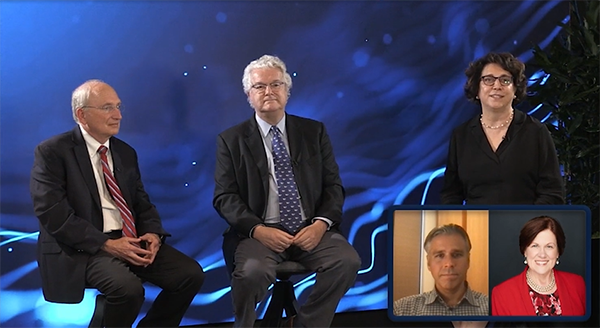
The recent Pediatric Device Innovators Forum (PDIF) exploring the state of focused ultrasound was held at the new Children’s National Research and Innovation Campus, a first-of-its-kind focused on pediatric health care innovation.


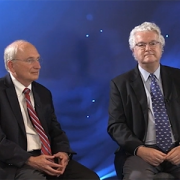
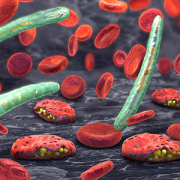
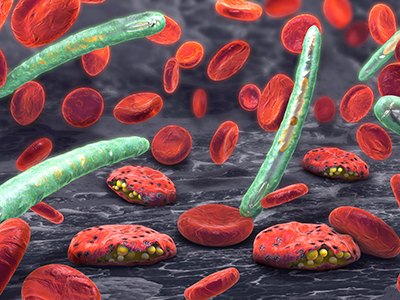
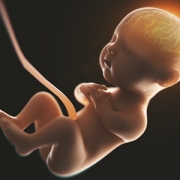
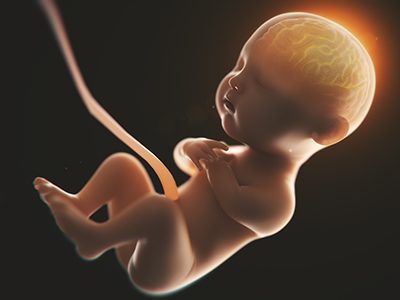 Preterm birth has been shown to increase the risk of autism spectrum disorders and other developmental problems, particularly in males. The more premature a baby is, the greater the risk of either motor or cognitive deficits. What does the preterm baby lose that is so critical to long-term outcomes?
Preterm birth has been shown to increase the risk of autism spectrum disorders and other developmental problems, particularly in males. The more premature a baby is, the greater the risk of either motor or cognitive deficits. What does the preterm baby lose that is so critical to long-term outcomes?